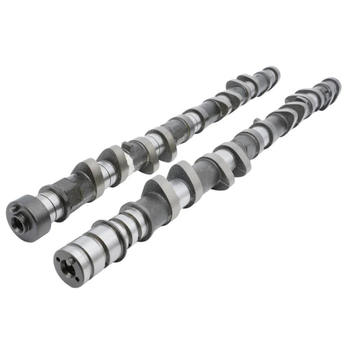The Evolution of Crankshaft Design
In the realm of modern engineering, crankshaft design has come a long way. As demands for improved performance, efficiency, and durability continue to rise, the design process has evolved to incorporate cutting-edge technologies like computational modeling and simulation.
The Power of Computational Modeling
So, what exactly is computational modeling? To put it simply, it's a method that uses mathematical equations to represent real-world systems or processes. In the context of crankshaft design, this means creating a virtual model of the crankshaft, which can be subjected to various stress tests and analyses.
The Role of Simulation in Crankshaft Design
Once a computational model has been created, simulation comes into play. By inputting different operating conditions and variables, engineers can observe how the crankshaft will behave in various scenarios. This allows for the prediction of potential issues and the optimization of the design before any physical prototypes are built.
Benefits of Computational Modeling and Simulation
There are numerous benefits to using computational modeling and simulation in crankshaft design. For one, it significantly reduces the time and cost associated with traditional prototype testing. Additionally, it allows for the exploration of design alternatives that might not have been considered otherwise.
Moreover, computational modeling and simulation can lead to improvements in performance and durability. By identifying and addressing potential weak points in the design, engineers can create crankshafts that are better equipped to handle real-world conditions.
Practical Applications and Examples
One practical example of computational modeling and simulation in action is the optimization of crankshaft geometry. By simulating different shapes and sizes, engineers can determine the optimal design for reducing stress and vibration, ultimately enhancing the overall performance of the engine.
Another application is in the analysis of material properties. By modeling the behavior of different materials under various loads and temperatures, engineers can select the most suitable material for the crankshaft, improving its durability and longevity.
Interactive Question
Have you ever wondered how computational modeling and simulation contribute to the development of more sustainable and eco-friendly engines? With the ability to predict fuel consumption and emissions, engineers can design crankshafts that minimize waste and maximize efficiency.
The Future of Crankshaft Design
As computational power continues to increase, so too does the potential for computational modeling and simulation in crankshaft design. It's an exciting time for the field, with advancements promising even greater performance, efficiency, and durability.
At our company, we're dedicated to staying at the forefront of this technology, continually refining our approach and delivering the best possible solutions to our clients.
For more detailed information, please visit our official website: https://www.obfe.cn




